Do you work as much as possible until you can work without it?
A year of exploring art in 8 of my most recent collages
It’s been months since I wrote here. I’ve been posting art online most days instead, but it’s time for me to get back to you in a more ordered and regular way.
To get a taste of where my curiosity has taken me in the past year of creativity, here’s a journey of what I’ve been exploring, told through eight of my most recent collages. And 2,000-ish words.
[The audio version of this has extra chat about the narrative around each piece, so give it a listen if you want more backstory. And more words!]
1. Layers of Impermanence
Torn photos, scrap paper, and a block of Post-Its. No careful cuts or gluing together. The analogue work I do is designed to live on in digital only. The physical is dismantled in the way mandalas can have an impermanence, no longer existing once the intricate form has been completed.
So while I do an increasing amount of physical work in my art, the final pieces are deliberately digital.
But how far to take the digital thing? I’m sure you’ve got views on generative AI, so let’s consider those with my second collage. Don’t worry, it’s not just an AI piece.
2. Visions, Obscured
I source imagery from as many places as possible. A ridiculous number of places. Including paid stuff from big sources and from small independent creatives.
But when I first started, my focus on digital was to make a point of using AI generated imagery to reclaim creativity from it (which I’d been trying to do for years before, breaking the AI algorithms as much as I could to get bizarre and unexpected results). The focus was a play to explore creative pursuits, to engage with what’s acceptable and what’s not, and to firmly keep the debate open on the ethics and important arguments surrounding AI outputs.
Collage has sooooo many examples of artists using material that’s in copyright, or which uses imagery through recognisable brands and faces, or which comes from questionable sources despite copyright not getting in the way (challenging what’s okay to use with/without permission).
The AI images aren’t able to be in copyright in many countries, although that’s strangely different here in the UK. Here, I am effectively allowed the copyright on the AI outputs I’ve prompted for. But that doesn’t matter, because there are still many questions over how the AI models were trained, among other things. In different ways, AI outputs are both fair and unfair game.
Visions, Obscured uses some old poster imagery, some stock photography, and even a couple of digital lines added. But it’s still quite heavy on the AI imagery.
Now my art and collage journey is a year in, I’m using AI outputs less and less. My point was made in my earlier works and I can always go back to them. Part of revisiting the journey. But I do still look at the range of opinions, emotions, and possibilities the world-changing tech of generative AI is introducing. Art needs to simultaneously accept and reject in order to reasonably explore.
A few months ago, I posted an AI image and explained that it was only AI. There was a point and I wasn’t particularly excited at the image’s AI-ness. But a commenter (who doesn’t follow me and has never interacted with me before or after), made a sarcastic remark about how proud I must be for my creation. They also linked to several artworks with similar colours and shapes that they claimed must have been stolen and used in order to make the AI image.
Humanity has been thrown something new, with no instruction book, and told to have fun and argue amongst ourselves. Any attempt to deal with the way LLMs have been introduced is playing catch-up. Worse, it’s too slow to actively manage catching up.
But there are many valid issues and I want them to stay seen. At the same time, rejecting AI in one sweeping gesture looks likely to be similar to rejecting the internet or rejecting phones or rejecting electricity… Kind of doable, but practically impossible.
But over my year of creating art, I’ve worked with AI so I can end up working without it. The remaining pieces use very little, if any, gen-AI stuff. Yet none of it would have come to fruition had I not started my journey by exploring all the new stuff.
I mean, look back at the very first newsletter I published here:
That’s from just over a year and a half ago. Long before I started making art. And here we are, a mere ONE AND A HALF YEARS LATER!
3. The Audacity To Do It
More recently, I try other generative experiments instead of the AI gens. The above piece includes a random blob of transparent noise, plus a load of lines that were drawn in a battle between me and a random line generator. The resulting shapes are fascinating and look great in a collage.
Am I working with a computer program, or am I manipulating imagery in the same way I make art anyway? How many artists combine automation with their sudden interruptions and directions?
My aim is to find interesting ways to make artistic assets that will fit into my collage work. Collage is how I want my artworks to be presented, even though my experiments could form artworks in and of themselves. It very much works to my mantra of “art within art within art”. Zoom out or dive deep, there are more layers of art to be found.
Collage is where I’m at, but let me know if you’d be interested in a series of dedicated automation/interruption pieces. Knowing me, it’d be a chance to take the idea even further.
4. An Outing of Textures
This piece uses photos I took on a walk. The images were supposed to be textures, but I see how the beauty in textures and overlays can be enough that they can form the artwork without any other imagery.
I only walked around the block. It was a nice moment with my family. I wasn’t worried about how the photos were composed, so I just snapped an image and walked on. Casual, in other words.
To be honest, you don’t even need to leave the home to snap a few texture pictures. And once you’ve got them, you can make art with them.
If the near infinite possibility sounds overwhelming, I do make restrictions. For this piece, I loaded the texture photos and applied them in order, one by one, until I had no more images left. No need to think about what piece to use next, no looking around for that perfect asset to place, and no overthinking when there are so little choices to make. All I have is the piece that needs placing on the canvas and the ability to manipulate and cut and crop until the placement is to my liking.
5. ROCKDOG
Photographs, cut up and photographed. Hastily done. Impermanence again, which lets the temporary analogue collage rise up in its layers and stand out in strange ways. I love it!
I placed some faint overlay of another analogue collage (the one below) so it had some extra texture. Other than a little colour grading, you’ve mostly got a photograph of a collage. But it’s not. This *is* the artwork. My choice is deliberate.
As for the narrative, I create with narratives in mind (before, during, and after the creation). But I want you, the viewer, to explore for your own narratives as you look at the image. I can talk about my own thoughts and offer little nudges on things to consider, which can add to the artwork in the same way your own thoughts can. In essence, the artwork lives on long after I’ve released it to the world. That’s the case with all works of art. And even the concept of art.
It’s all to play for and explore.
6. The Missing & The Never
A heavily post-processed analogue collage. I’m so drawn to this piece and I don’t want to stop looking at it. For me, manipulating the collage digitally can be a big part of allowing the stories to come alive in ways that suit me just right.
There are apps with one-click ways of getting weird and wonderful effects to imagery. I prefer to mess around with settings until I find the balance I wish to convey. And it’s fun. 😁
But I still like apps that are easy enough for me to use without taking up loads of my time.
Whether you want one-click or totally manual, a tool I heartily recommend with both methods is Mosh. It doesn’t seem well known, but Mosh is amazing. You can literally click for random stuff if that floats your boat.
But like I say, I’m all about the options. More on that in a moment.
7. Meaning through adversity
Bold colours, a text in German, interesting characters. All sorts going on here.
The image on the left is from a piece by John Elsas, found on Artvee (an amazing resource for public domain art images). The German text also comes from Elsas, which is about meaning through adversity. That features in text twice, and is the name of the piece. Maybe I’m signposting too much… 😅
The images come from various sources, including a couple of things I scanned when testing a new scanner. Analogue becoming digital once again.
The colour scheme and the texture draw me in most. By adding extra noise, a bit of blur, and some posterisation, the image goes to places the original collage didn’t manage.
My collage works are finished when I’ve processed them. I may make another post where I show before and after pics of the artworks. Although the after images are the approved artworks, you may prefer the pre-processed versions. While I like a bit of noise, enjoy upping the contrast, and like changing the hue from time to time, you may prefer more faded tones and less buzz. If so, I’m happy for you to see what I considered work in progress as a more representative artwork for you.
It all counts. Scribble on a scrap paper with a biro and it could be considered a finished piece of art. See a crack in a pavement and it could be considered a discovered piece of art. Look at someone’s WIP and see an already complete piece of art.
Art is not something humanity will ever complete. That said, are we going around in circles or still making key progress?
That question takes us to the final piece today.
8. but is it?
Progress… but is it?
I’ve used images from almost every type of source I grab from for this collage. Stock photography, textures I’ve made, randomly generated patterns, artworks out of copyright, stuff like that. Funnily enough, I don’t think there are any AI outputs used as assets, but I wasn’t trying to make a point—just worked out that way.
The em-dash in that last sentence also just worked out that way. But since I mentioned AI…
I’m a big fan of em-dashes after Alison Acheson talked about them a while back. Despite having a degree in English, I’d long ignored the em-dash with a shrug. I used ellipses (…) everywhere instead, but I concede the em-dash serves much much betterer much much more of the time.
Before the em-dash became an AI-spotting thing, I was happily typing Alt-0151 to make the magic appear. I mean, Alt-0151 to produce an em-dash—it’s no wonder peeps are suspicious when even social media posts are littered with them so often now.
My work on art has been a big personal exploration over the past year. For me, it’s progress and a half. But how much does it represent progress beyond that? An unanswerable question, but one I like to chew over. Hence the collage above.
Like the em-dash shenanigans, changes are happening all the time. Societal, technological, and more. But change doesn’t necessarily mean progress. We take steps forward and backward, and it can be immensely scary.
When I see your art, and when I create my own, I see beauty and joy even in the scary moments.
Progress or otherwise, please keep arting your art.


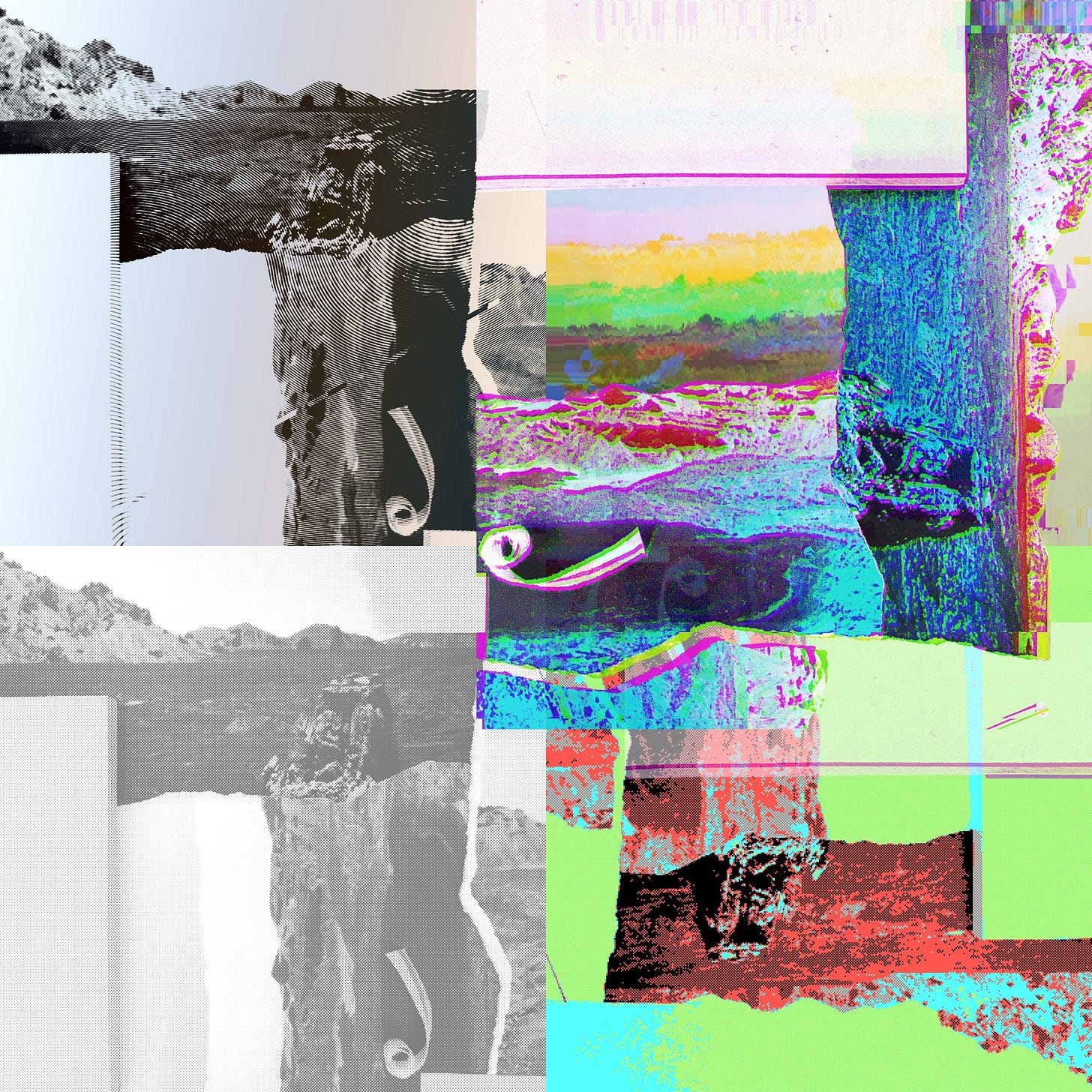
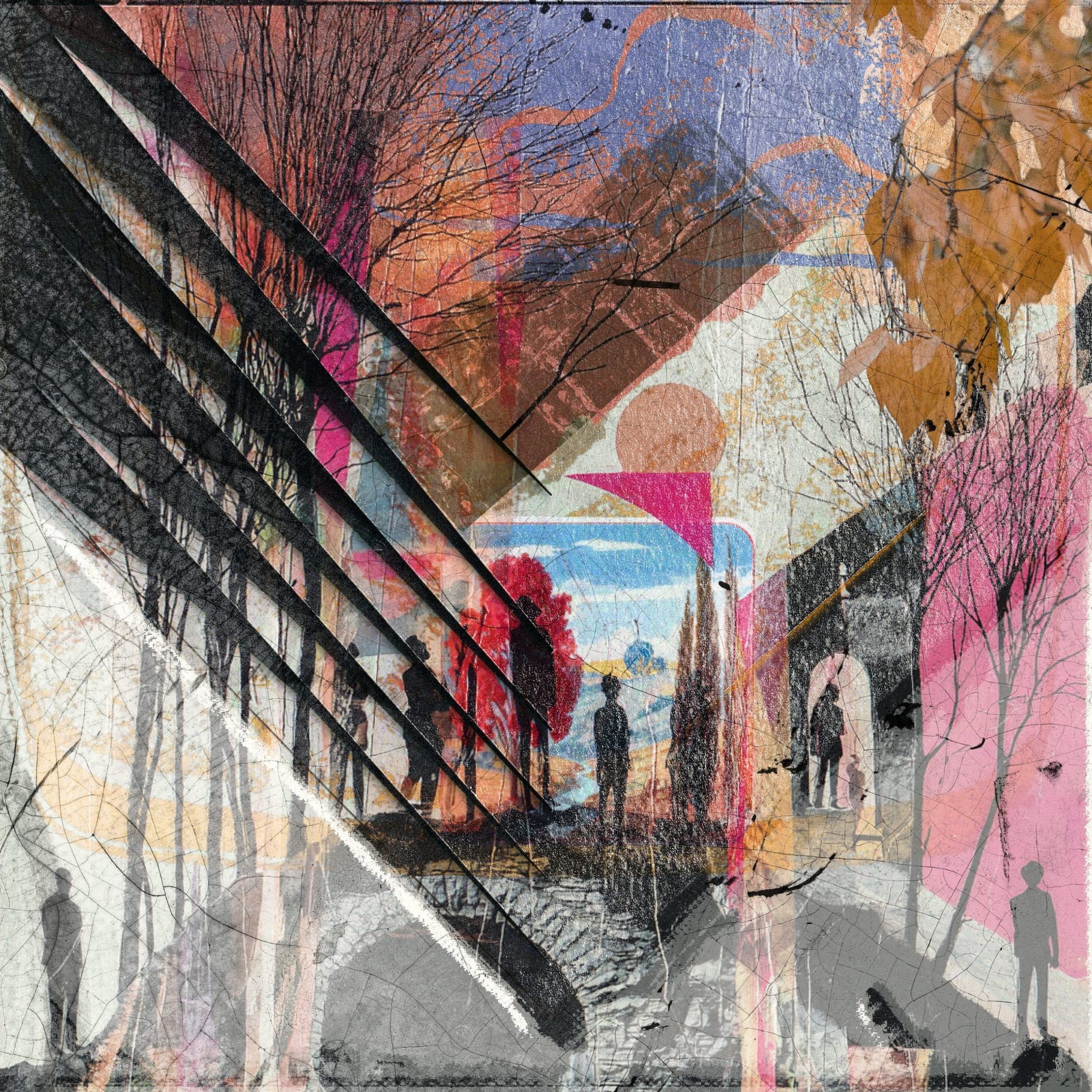

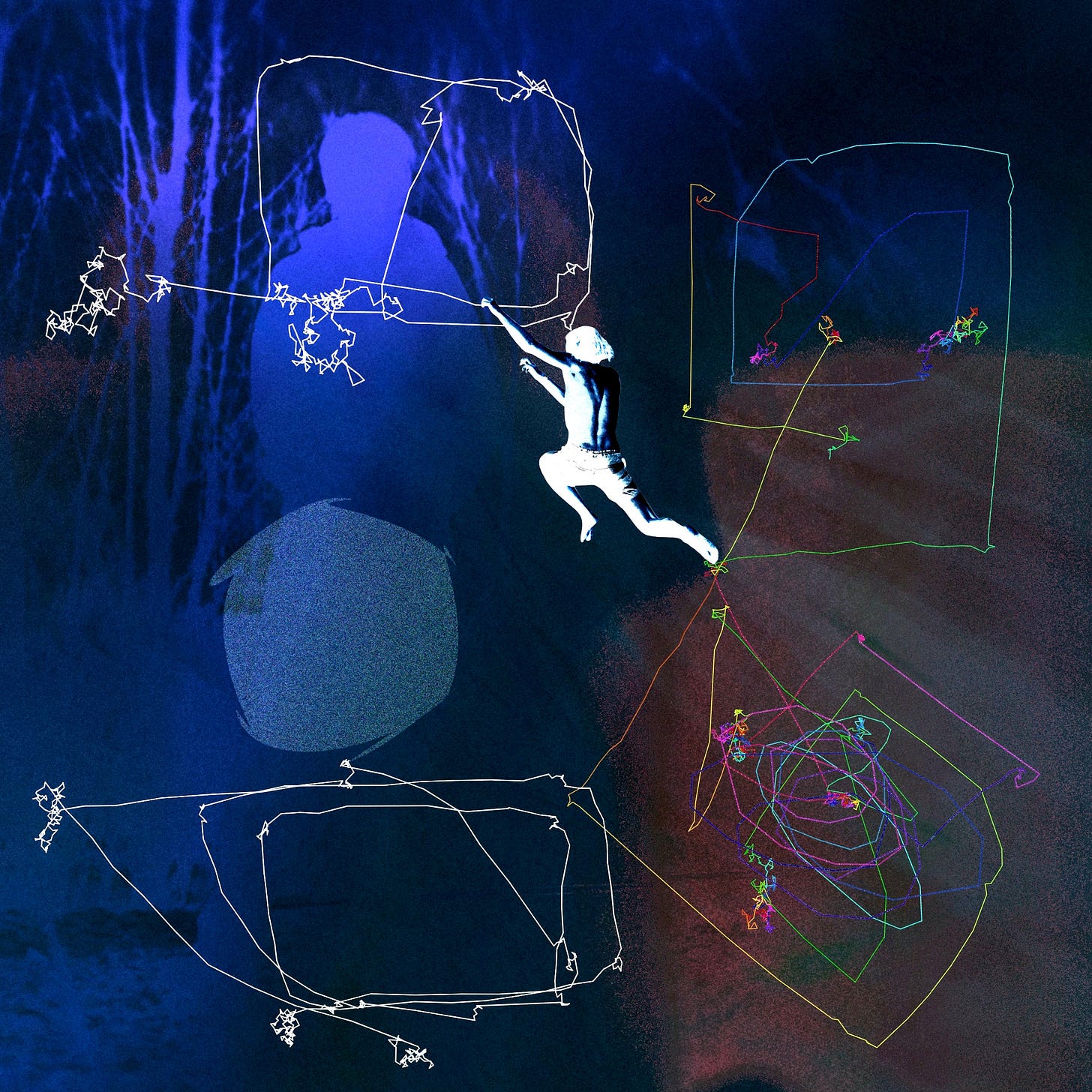

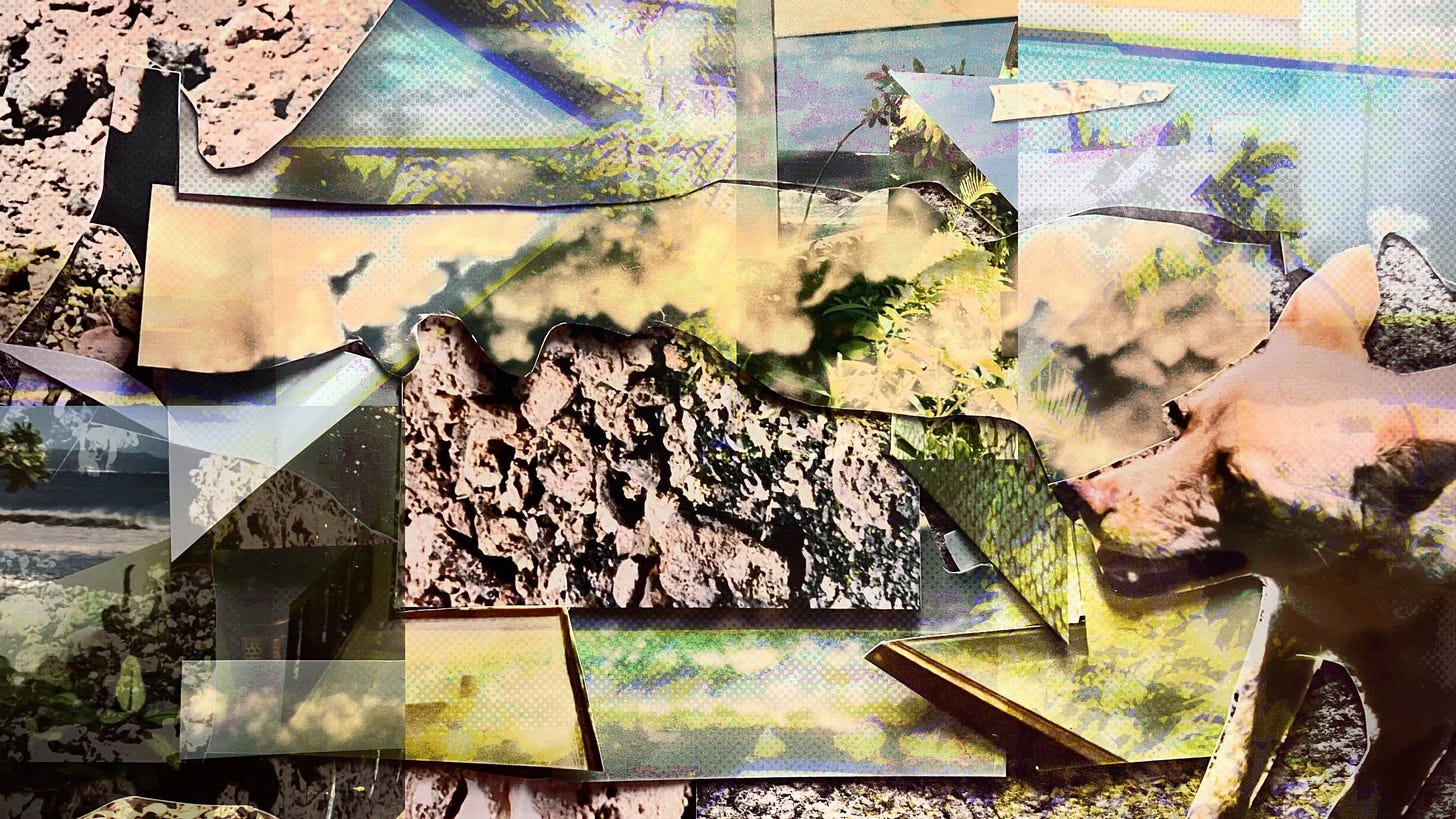
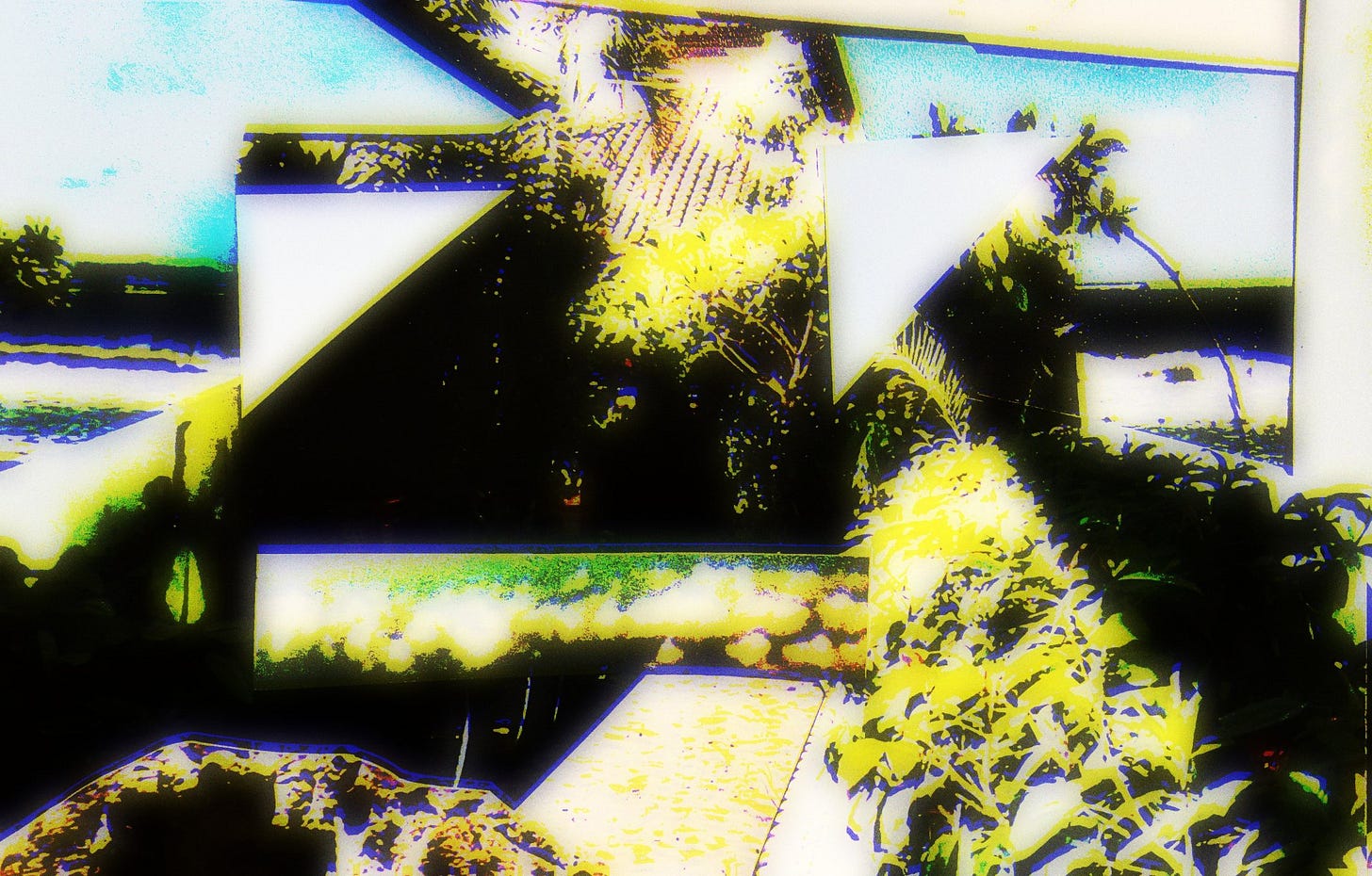
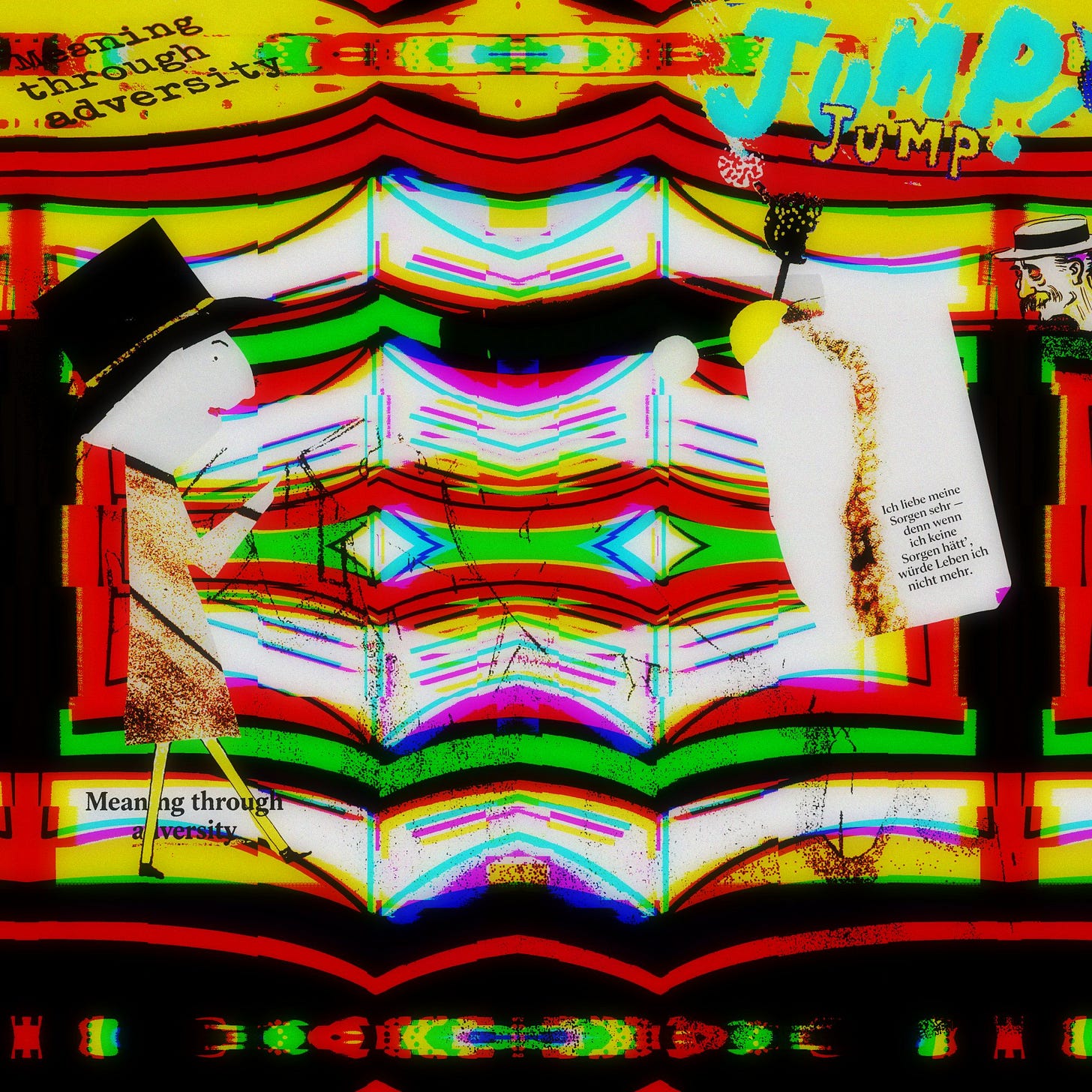
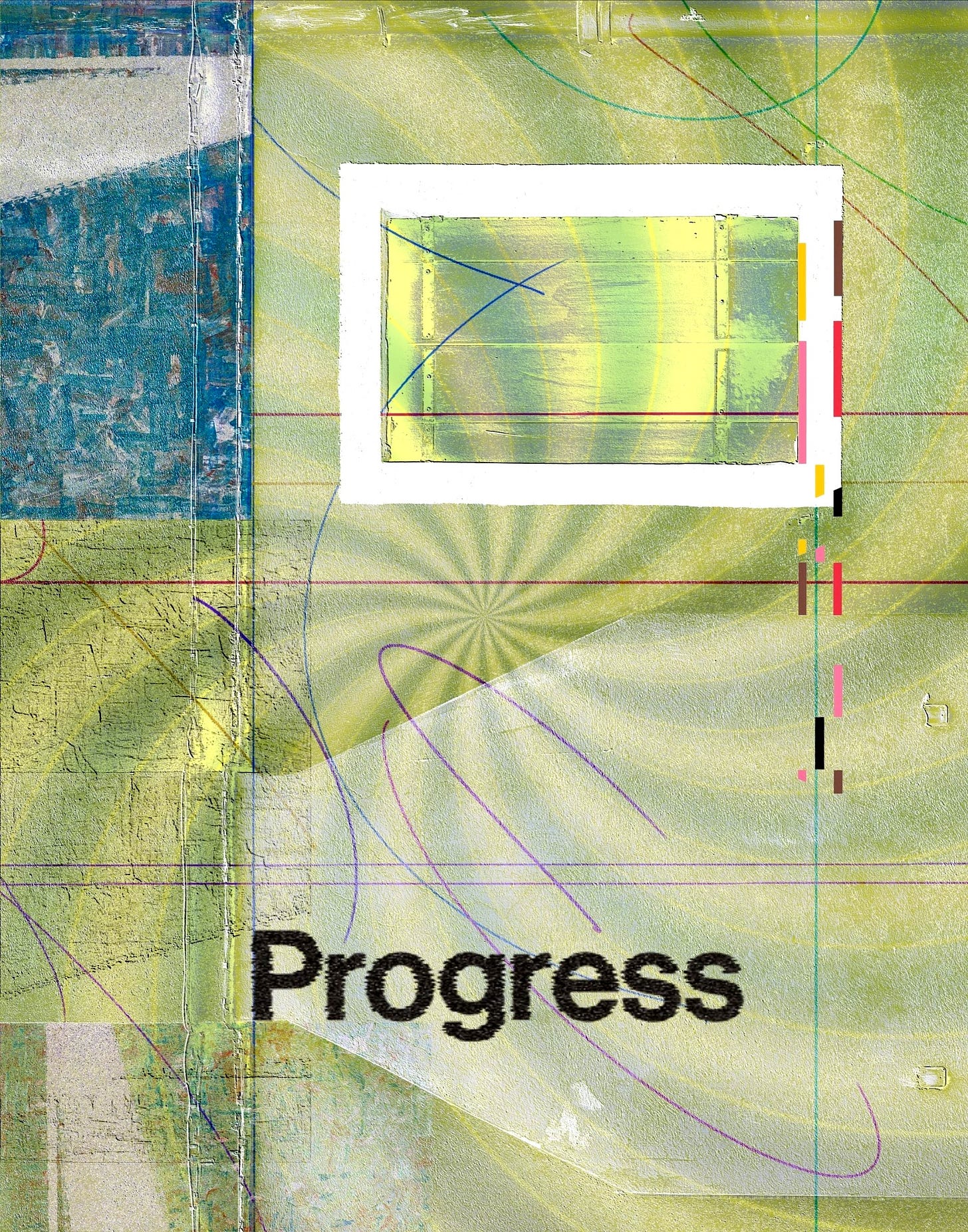
Yesterday, I went to my first art class. I felt like a kid! What a time.
Good to see this creativity. The second, under Visions Obscured, really stands out for me with its layers!
And thanks for sharing my work, too. If anyone wants the link to the em dash post: https://unschoolforwriters.substack.com/p/dash-it-all-the-en-and-em-dashes. Have fun!
Wow! What a window into your process! Love it!
So glad to be partnered up on the photoetry series!